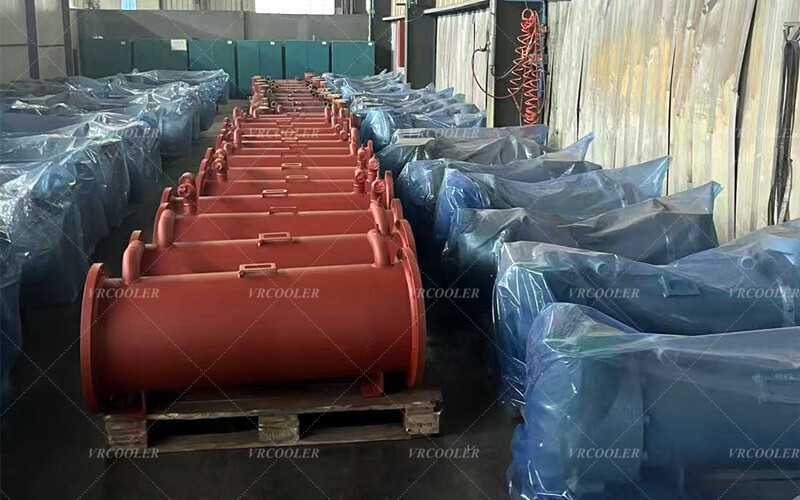Creating a vacuum in a condenser (a critical component in thermal systems like steam turbines, refrigerators, and power plants) is not accidental—it is a deliberate design choice to optimize system efficiency, performance, and safety.
Reduce the Boiling Point of the Working Fluid (Key Thermodynamic Driver)
The fundamental reason for a condenser vacuum lies in the relationship between pressure and boiling point: the lower the pressure, the lower the temperature at which a liquid boils (or a vapor condenses).
In thermal systems (e.g., steam power plants), the condenser’s role is to condense low-pressure, low-temperature vapor (e.g., steam exiting a turbine) back into a liquid (water). Here’s how vacuum enables this:
At atmospheric pressure (1 bar), water boils/condenses at 100°C. To condense steam at a lower temperature (e.g., 30–40°C, which is achievable with cooling water from rivers or cooling towers), the condenser pressure must be reduced below atmospheric pressure (i.e., a vacuum).
If no vacuum existed (e.g., condenser at atmospheric pressure), the steam would require cooling to 100°C to condense—a temperature far higher than what most cooling sources can provide (ambient cooling water is typically 20–30°C). A vacuum bridges this gap, allowing condensation to occur efficiently with readily available cooling.
Maximize Energy Extraction in Turbines (Efficiency Boost)
In power plants or industrial turbines, the goal is to extract as much energy as possible from high-pressure steam. This depends on the pressure difference across the turbine:
Steam enters the turbine at very high pressure (e.g., 150–200 bar) and temperature (e.g., 500–600°C). As it passes through the turbine blades, it expands, loses pressure, and transfers energy to the turbine (driving generators or machinery).
To maximize energy transfer, the steam must exit the turbine at the lowest possible pressure (ideally near a vacuum). A condenser vacuum ensures the turbine’s outlet pressure is minimized, creating a larger pressure gradient between the turbine’s inlet and outlet. This gradient directly increases the turbine’s power output and overall cycle efficiency.
Example: In a steam power plant, a well-maintained condenser vacuum (≈0.03 bar absolute pressure) can improve the plant’s thermal efficiency by 10–15% compared to operating at atmospheric pressure.

Minimize the Size and Cost of the Condenser
The heat transfer rate in a condenser depends on the temperature difference between the vapor (e.g., steam) and the cooling fluid (e.g., water). A vacuum lowers the condensation temperature of the vapor, increasing this temperature difference—even with low-temperature cooling water.
A larger temperature difference means the condenser can transfer the same amount of heat with a smaller surface area (since heat transfer rate ∝ surface area × temperature difference).
A smaller condenser reduces upfront capital costs (less material, smaller footprint) and operational costs (lower maintenance for smaller equipment).
Prevent Air Infiltration and Corrosion
While vacuum is primarily for performance, it also mitigates operational risks:
Air infiltration: If the condenser were at atmospheric pressure, air (which is non-condensable) would leak into the system and accumulate. Air acts as an insulator, reducing heat transfer efficiency and forcing the condenser to work harder. A vacuum prevents air from entering (since pressure inside is lower than outside) and allows any leaked air to be removed by devices like air ejectors or vacuum pumps.
Corrosion: In steam systems, oxygen in air accelerates corrosion of metal components (e.g., turbine blades, condenser tubes). By eliminating air via vacuum, corrosion rates drop significantly, extending equipment lifespan.
How Is the Vacuum Maintained?
To sustain the vacuum, condensers rely on two key systems:
Cooling System: Circulates cold fluid (e.g., river water, chilled water) around the condenser tubes. This cools the vapor inside the tubes, causing it to condense into liquid (reducing pressure).
Vacuum Removal System: Removes non-condensable gases (e.g., leaked air) that could 破坏 the vacuum. Common devices include:
Air Ejectors: Use high-velocity steam to suck out air.
Vacuum Pumps: Mechanical pumps that actively extract gases.

